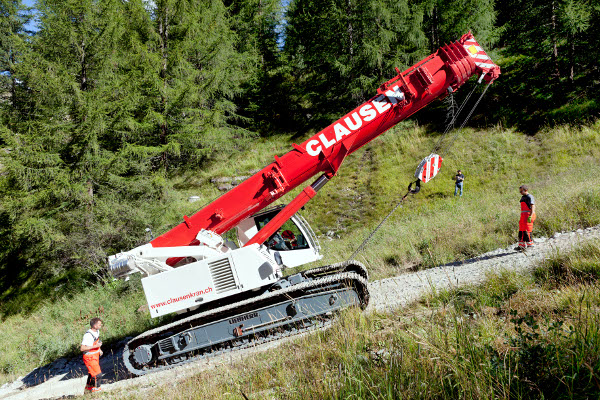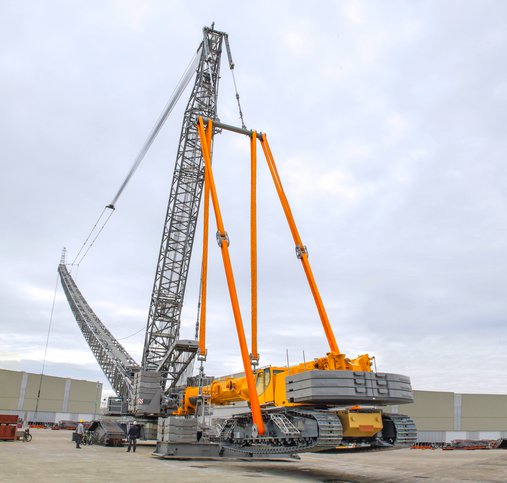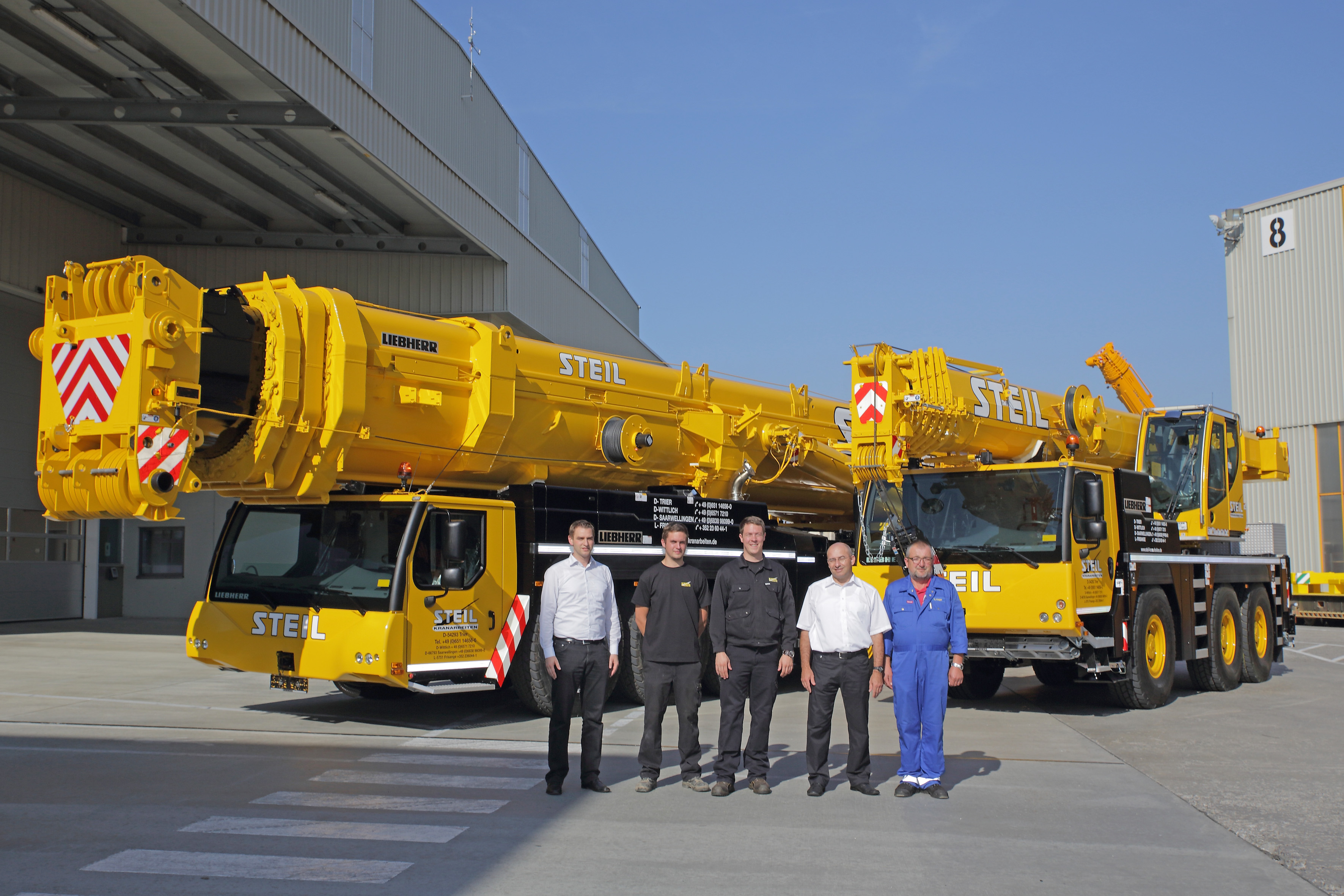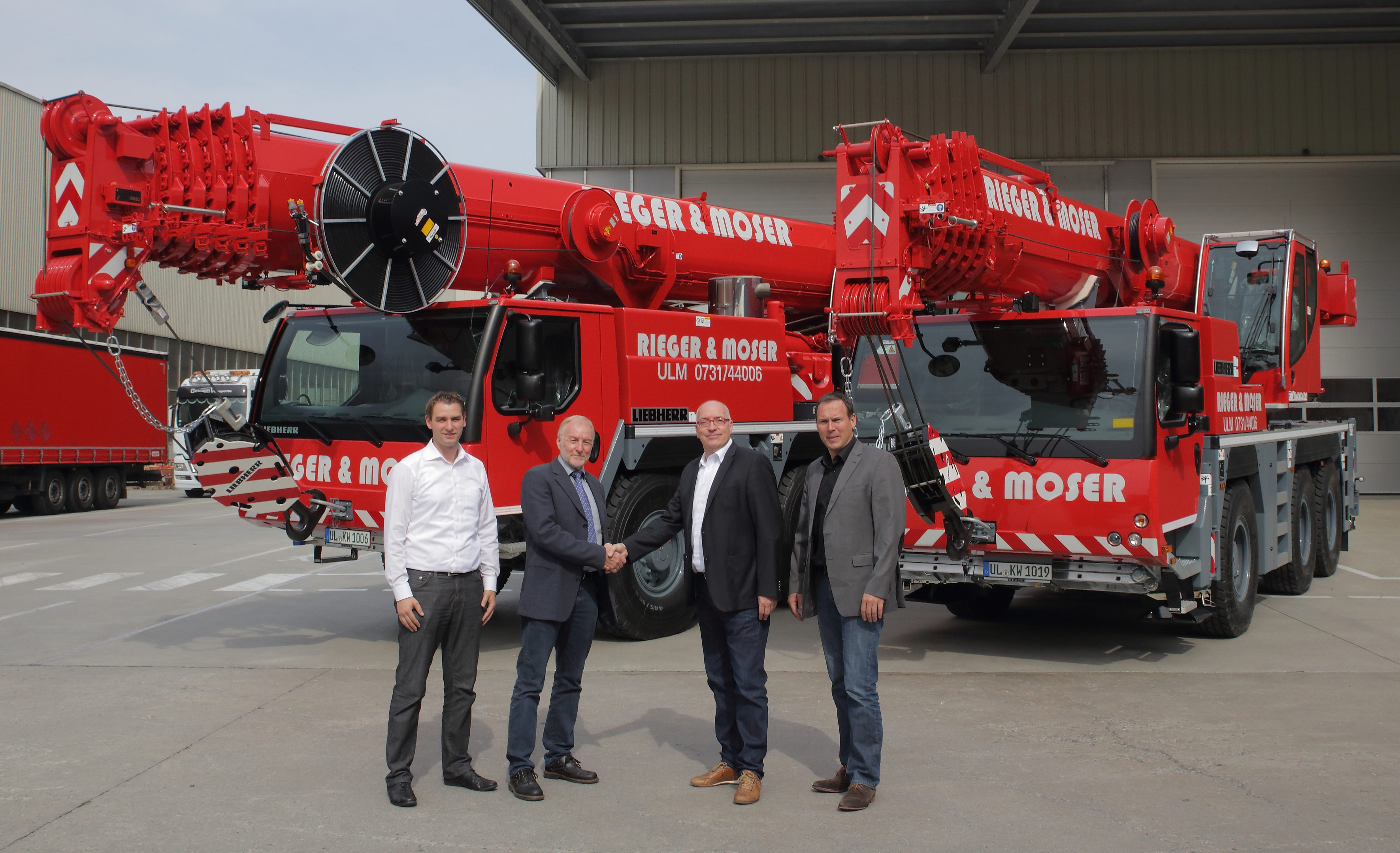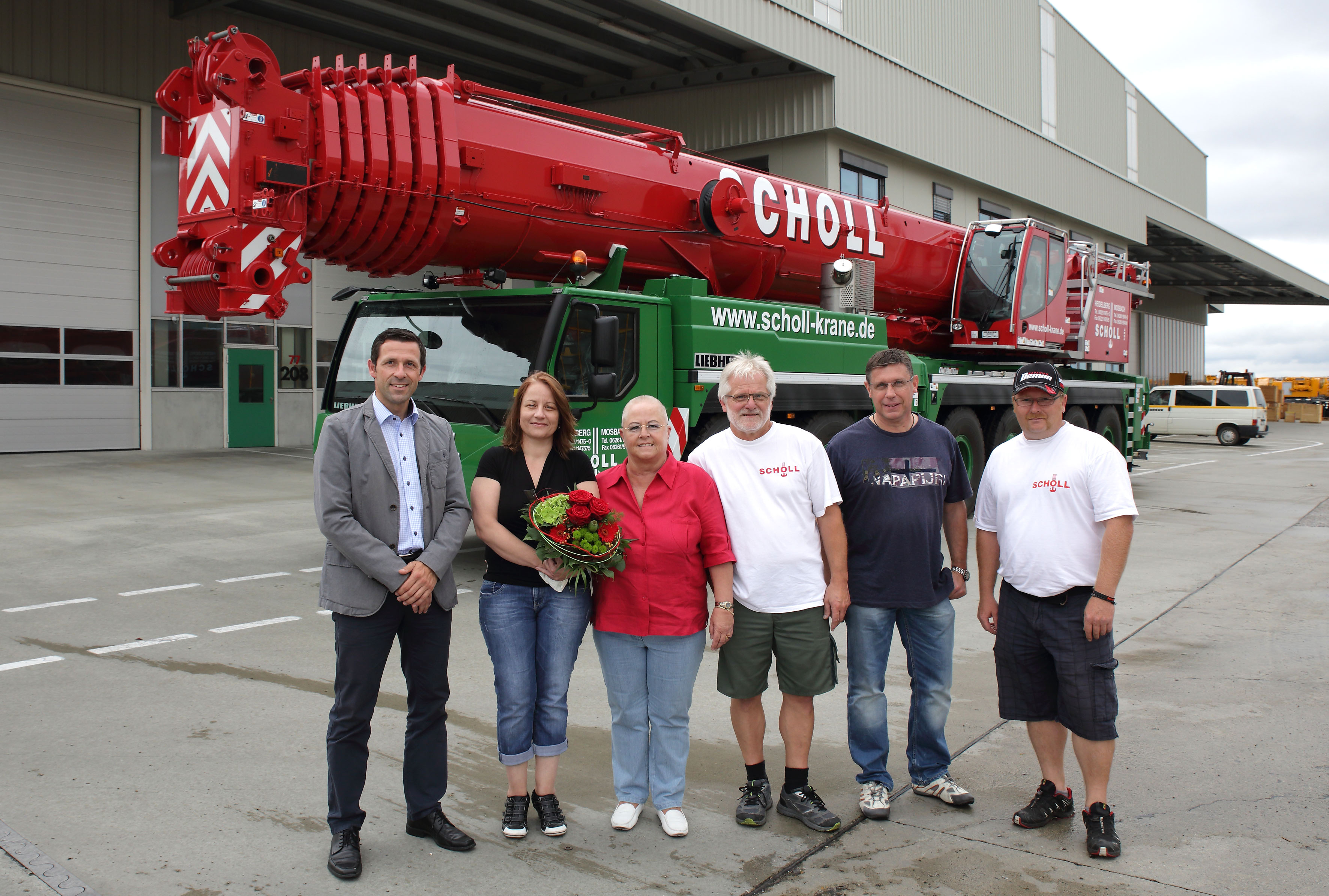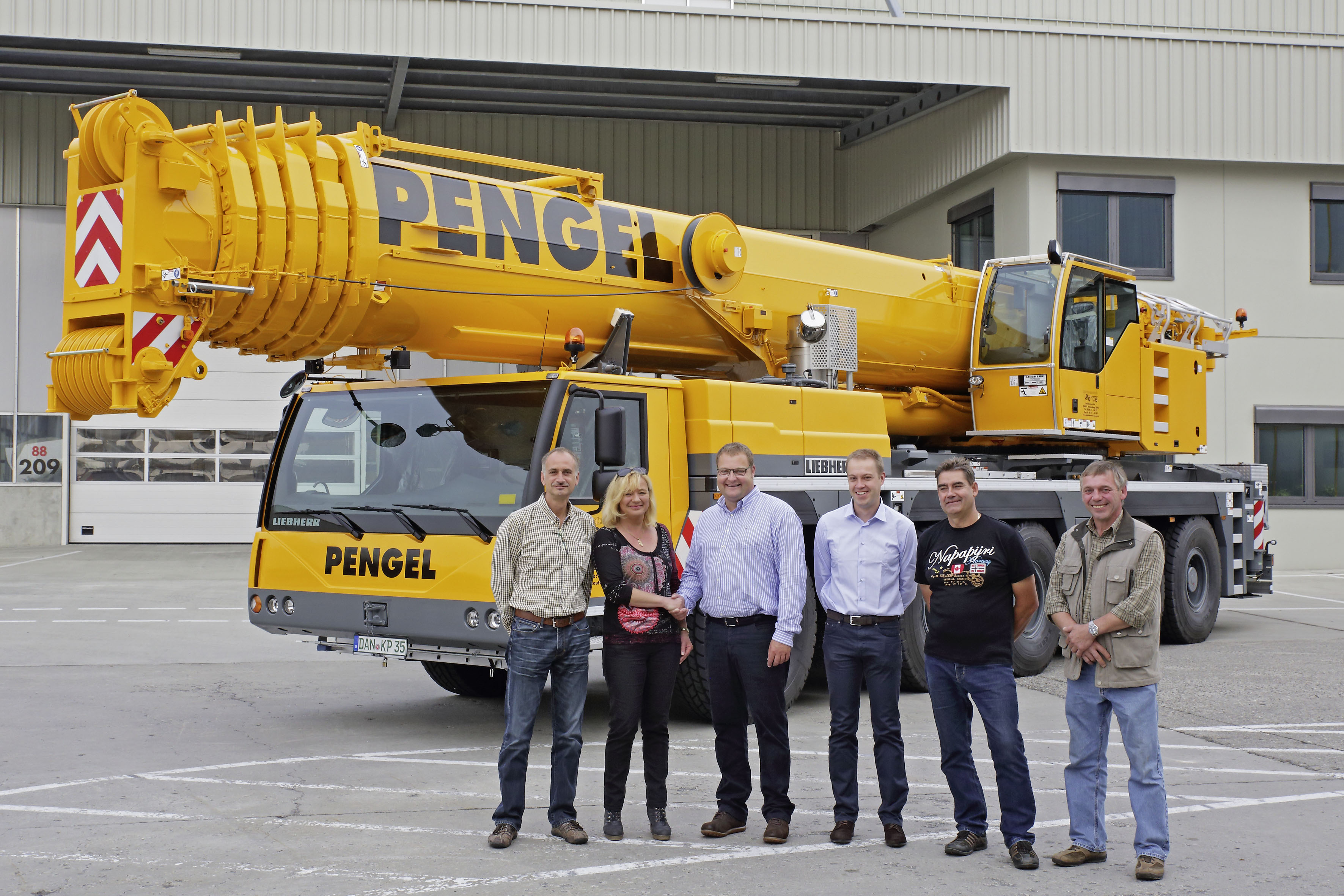A Liebherr LTR 1060 crawler crane has tackled the 40% gradients of the Swiss Alps to extend a railway tunnel.
Switzerland-based crane company Clausen Kran used the LTR 1060 to navigate the steep inclines and tight bends at an altitude of 2,020m, to extend a tunnel on the Gornergrat railway in Zermatt, in the Wallis region of Switzerland.
The tunnel is being extended to allow a ski run to be built over it, which will host FIS (International Ski Federation) events.
The LTR 1060 completed the 920m route — which had an ascent of 180m — without ballast at a gross weight of 38t, and with the boom angle at 20°. The hook block was also secured, to prevent it from swinging.
Due to the narrow track, the crane had to manoeuvre with its crawler chassis retracted. . The narrow crawler track meant, however, that the steerability of the crane was severely restricted as a result of the poor ratio between the crawler length and the track width.
To allow the vehicle to be steered in the tight bends, 1m lengths of square timber were placed under the inner crawler chains to act as pivots. Another recommendation from Liebherr was that the direction of travel of the crawler chassis should be selected so that the chain drives were at the rear, to ensure that the crawler chain remained taut on the ground at all times.
Geri Clausen, owner of Clausen Kran, said: “We have lots of sites where this highly-manoeuvrable crane is simply perfect.”
